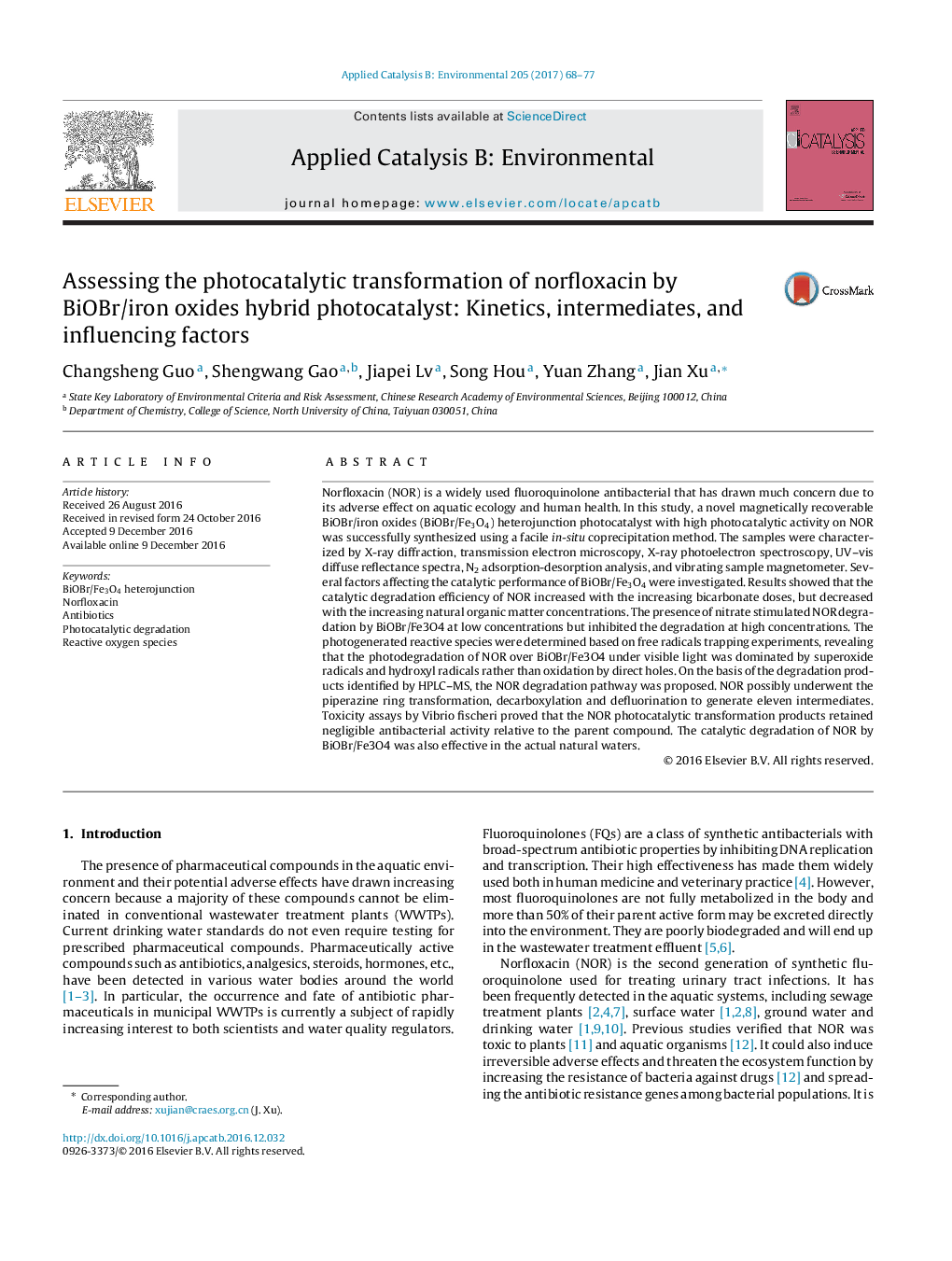| Article ID | Journal | Published Year | Pages | File Type |
|---|---|---|---|---|
| 6454285 | Applied Catalysis B: Environmental | 2017 | 10 Pages |
â¢A novel superparamagnetic BiOBr/Fe3O4 was fabricated via an in-situ growth method.â¢Good magnetic property makes it easy for the material's recovery from solution.â¢O2â and OH are the two dominant ROS in NOR photocatalytic degradation.â¢NOR underwent piperazine ring transformation, decarboxylation and defluorination.
Norfloxacin (NOR) is a widely used fluoroquinolone antibacterial that has drawn much concern due to its adverse effect on aquatic ecology and human health. In this study, a novel magnetically recoverable BiOBr/iron oxides (BiOBr/Fe3O4) heterojunction photocatalyst with high photocatalytic activity on NOR was successfully synthesized using a facile in-situ coprecipitation method. The samples were characterized by X-ray diffraction, transmission electron microscopy, X-ray photoelectron spectroscopy, UV-vis diffuse reflectance spectra, N2 adsorption-desorption analysis, and vibrating sample magnetometer. Several factors affecting the catalytic performance of BiOBr/Fe3O4 were investigated. Results showed that the catalytic degradation efficiency of NOR increased with the increasing bicarbonate doses, but decreased with the increasing natural organic matter concentrations. The presence of nitrate stimulated NOR degradation by BiOBr/Fe3O4 at low concentrations but inhibited the degradation at high concentrations. The photogenerated reactive species were determined based on free radicals trapping experiments, revealing that the photodegradation of NOR over BiOBr/Fe3O4 under visible light was dominated by superoxide radicals and hydroxyl radicals rather than oxidation by direct holes. On the basis of the degradation products identified by HPLC-MS, the NOR degradation pathway was proposed. NOR possibly underwent the piperazine ring transformation, decarboxylation and defluorination to generate eleven intermediates. Toxicity assays by Vibrio fischeri proved that the NOR photocatalytic transformation products retained negligible antibacterial activity relative to the parent compound. The catalytic degradation of NOR by BiOBr/Fe3O4 was also effective in the actual natural waters.
Graphical abstractDownload high-res image (158KB)Download full-size image
